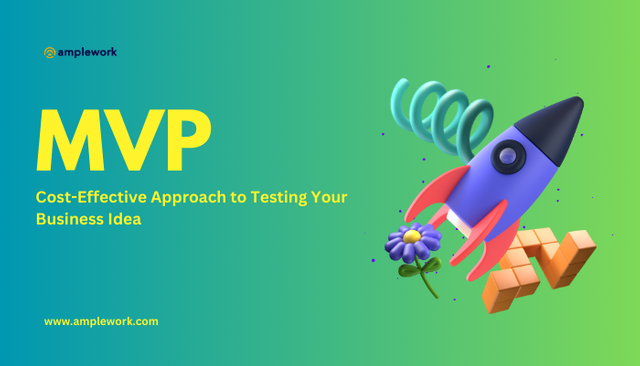The Cost-Effective Approach to Testing Your Business Idea: MVPs
According to the latest market trends in Los Angeles, we have seen a devastating growth in the number of startups. Since the startups are growing the need to test the latest innovative ideas of these businesses effectively is also growing. It clearly states that your business idea might have brilliant concepts, but it is necessary to check whether it is crafted according to the needs and requirements of the targeted audiences. MVP is one such methodology, enabling businesses to craft a prototype of a product having a minimal number of necessary features and functionalities. A variety of MVP development companies are enhancing your product's market reach through a minimum viable product.
Understanding MVP’s
An MVP is a stripped-down version of your product or service that contains only its core features. It is the most simplified form that still addresses the primary problem your business aims to solve. The key here is to deliver enough value to attract early users while minimizing development costs and time. The MVP serves as a prototype, allowing you to gather real-world feedback and data before committing to a full-scale product launch.
Why You Should Prefer MVPs For Your Business Products?
1. Cost Efficiency: Building a full-scale product or service can be a substantial financial undertaking. Developing an MVP allows you to significantly reduce your initial costs. Instead of crafting a complete product you just must craft a small-scale mobile app with a minimum number of necessary features and functionalities to make your users understand your product.
2. Time Savings: We are all aware of the importance of time when it comes to business prospects. MVPs can be developed relatively quickly compared to a fully featured product. This means you can get your concept into the hands of potential customers sooner, accelerating the learning process. MVP development effectively saves the time of your business, crafting the most efficient minimum viable product.
3. Feedback and Iteration: An MVP is not a one-time release; it's the beginning of an iterative process. User feedback collected from the MVP can be used to make informed decisions about product enhancements. This continuous improvement cycle enhances your product's chances of success when you decide to scale up your business.
4. Client-Centric Approach: An MVP forces you to focus on the core value proposition of your idea. By prioritizing the most critical features, you ensure that your product or service addresses the primary needs of your target audience, increasing the chances of satisfying the customers at the early stages. This client-centric approach helps businesses craft a minimum viable product according to the user’s requirements, driving their product toward growth.
Step By Step Process Crafting a Perfect MVP For Testing Your Product
1. Identify Your Core Value Proposition: Start by defining the problem your business idea aims to solve and the core value it delivers to customers. This clarity is crucial in determining which features are essential for your MVP. Before delivering the users with the MVP development services, you must clearly identify the core values and requirements of the businesses and the goals that the businesses need to achieve.
2. Build a Prototype: Create a basic version of your product or service that incorporates the core features. This prototype should be functional enough to provide value to early users. Most MVP app development companies prefer to craft a prototype before creating an MVP. Providing their users with a detailed descriptive ideology about the functionalities of their MVP and its user experiences. It is the most necessary step when you are practicing MVP app development.
3. Gather Early Adopters: Identify a group of potential users who are willing to try your MVP. These early adopters should align with your target audience and be open to providing clear feedback about the performance of your MVP. This generally provides you with an ideology about how well your product is performing in the market or the future predictions about your product. Most MVP app development consultants also provide you with an idea of how you can gather the early adopters for your MVP in the earlier stages.
4. Collect Feedback Regularly: Encourage your early adopters to use the MVP and provide feedback. After you get the feedback you should pay close attention to their suggestions, pain points, and preferences. This information will guide your future development efforts.
5. Iterate and Improve Your MVP: Based on the feedback received, make necessary improvements to your MVP. This could involve adding features and functionalities, refining the user interface, or addressing usability issues like the bugs and errors that are present in your MVP.
6. Application Testing: You should continue to test the updated MVP with your early adopters. Repeat the feedback collection and iteration process until you achieve a product-market fit or are confident in your concept's viability.
7. Implementation of MVP: Once you have gathered enough positive feedback and data to support your business idea, you can make an informed decision about scaling up to a full-scale product or service. After you have scaled up the features and functionality of that application you should go for its implementation or launch.
Read More: MVP for Startups: Why Less is More in the Early Stages
Conclusion
In this article, we have provided you with the different approaches to how MVP is considered the best approach if any of the businesses need to test their software solutions in the market of Los Angeles. Amplework, the MVP software development company uses the fastest approaches for crafting a product based on the actual product’s ideology and equipped with minimal features. With this research, it is completely derived that MVP is one of the most efficient methodologies for testing your business’s products and launching them in the market to drive growth.
